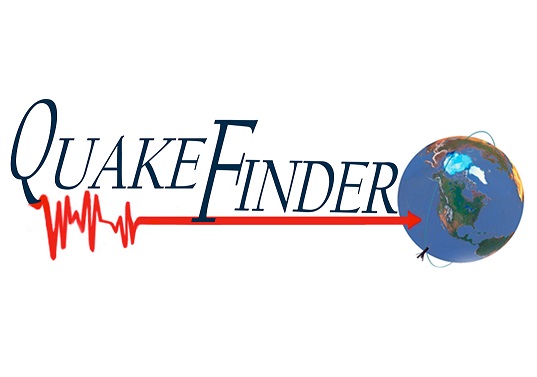Palo Alto, CA, October 14 – QuakeFinder, Stellar Solutions’ earthquake forecasting research initiative, and Google Research have published a study in American Geophysical Union’s (AGU) Journal of Geophysical Research: Solid Earth that advances the pursuit of predictive data in alerting the public to impending earthquakes. The team identified a signal of modest but statistically significant size in the days immediately preceding intermediate to large earthquakes in California. The full publication of Case-Control Study on a Decade of Ground-Based Magnetometers in California Reveals Modest Signal 24–72 hr Prior to Earthquakes can be viewed at https://doi.org/10.1029/2022JB024109 .

“Data science and artificial intelligence are giving scientists new tools to understand the physical world. We are excited that our research combined with Stellar Solutions’ unique magnetometer recordings is hinting at previously unknown physical phenomena in earthquake forecasting,” said Jason Miller, Product Management Director for Google Applied Science.
The Google Applied Sciences team led the effort, designed the study, and performed the analysis with exceptional rigor. Quakefinder, the humanitarian R&D division of Stellar Solutions, provided the data and verified the findings.
“This study provides important evidence that a physical change can be observed in the days before an earthquake. While we still have much work to do in identifying stronger signals, this research supports our vision that earthquake forecasting using the magnetic field may one day be possible,” said Dan Schneider, QuakeFinder’s Director of Research and Development.
QuakeFinder, which is seeking to ultimately save lives by forecasting earthquakes, has collected data since 2005 using over 150 stations around the world. Their high-resolution magnetometer recordings have captured thousands of earthquakes (M3.0 or greater) to support their work in developing algorithms to analyze these signals.
This is the second study that has evaluated the QuakeFinder California dataset and the second one to find a statistically significant correlation between activity in the magnetic field and earthquakes days later. In 2019, QuakeFinder published the first comprehensive evaluation of this dataset in Computers and Geosciences: https://doi.org/10.1016/j.cageo.2019.104317. This used single station data and different algorithms but the same data set and found statistical correlations prior to quakes greater than M4.
The second study (by Google) achieved a Signal to Noise Ratio (SNR) of 0.5 when comparing the magnetic data recorded 24-72 hours before earthquakes (greater than magnitude 4.5) to data recorded earlier. A supplemental analysis added a compensation factor for the average global magnetic activity and this boosted the SNR from 0.5 to 0.96. As an SNR of 1 or greater is typically considered a compelling result in the physical sciences, this analysis points toward the magnetic field being a valuable source of information in the earthquake forecasting process.
The study employed a number of strategies to ensure rigor. One was to combine signals from pairs of stations to guard against noise that might pollute the data at a single station, such as automobile traffic, construction and other human activity near the station’s location. Another strategy was to control for variations across different stations, locations and geologies by using a case-control construction in which data from station pairs close to an earthquake (~30km) are compared to other time periods from the same station pair. These strategies help to eliminate false positives.
“As a next step in our research, when correcting for global magnetic activity, we can look to use actual high resolution remote station data provided by QuakeFinder rather than the low resolution global average provided by the National Oceanic and Atmospheric Administration, as it may allow the signal to become even more apparent,” Schneider added. He noted that this study was conducted on data collected in California; and its results cannot be assumed for other fault types or geologic conditions.
Stellar Solutions is a Malcolm Baldrige Award-winning company that for 27 years has solved some of the most complex systems engineering problems, from national security to space exploration, across commercial and government sectors. Founder Celeste Ford’s vision, satisfying customer critical needs while realizing employee dream jobs, led to the creation of QuakeFinder in 2001.
Stellar Solutions has invested over $30-million in the QuakeFinder program, augmented by partial grants from NASA, the U.S. Department of Defense, PG&E and the Musk Foundation. The initiative has drawn on the expertise of leading aerospace organizations like NASA, geoscientists from Stanford University and University of California at Berkeley, Stellar Solutions’ own systems engineers, and partners around the world including from Peru, Taiwan and Greece. Originally inspired by Stanford research after the 1989 Loma Prieta earthquake in California, QuakeFinder founder Tom Bleier devised the idea of placing sensors underground every 20 miles close to the fault trace to capture pre-seismic electromagnetic disturbances.
“The QuakeFinder/Google team is very proud to have advanced the state of earthquake forecasting and we look forward to a global effort to build on this important work and save lives,” Ford said.
About Stellar Solutions, Inc.: Stellar Solutions, Inc. is a global aerospace and systems engineering services provider to commercial, defense, intelligence, civil and international sectors. Stellar Solutions provides systems engineering capabilities and strategic support for global communications, remote sensing, national defense, and space exploration. These solutions to customer critical needs connect technology and customers across multiple domains. With physical operations throughout the U.S. and around the globe, Stellar Solutions is a recognized leader in delivering end-to-end critical expertise and problem-solving skills. https://www.stellarsolutions.com/
